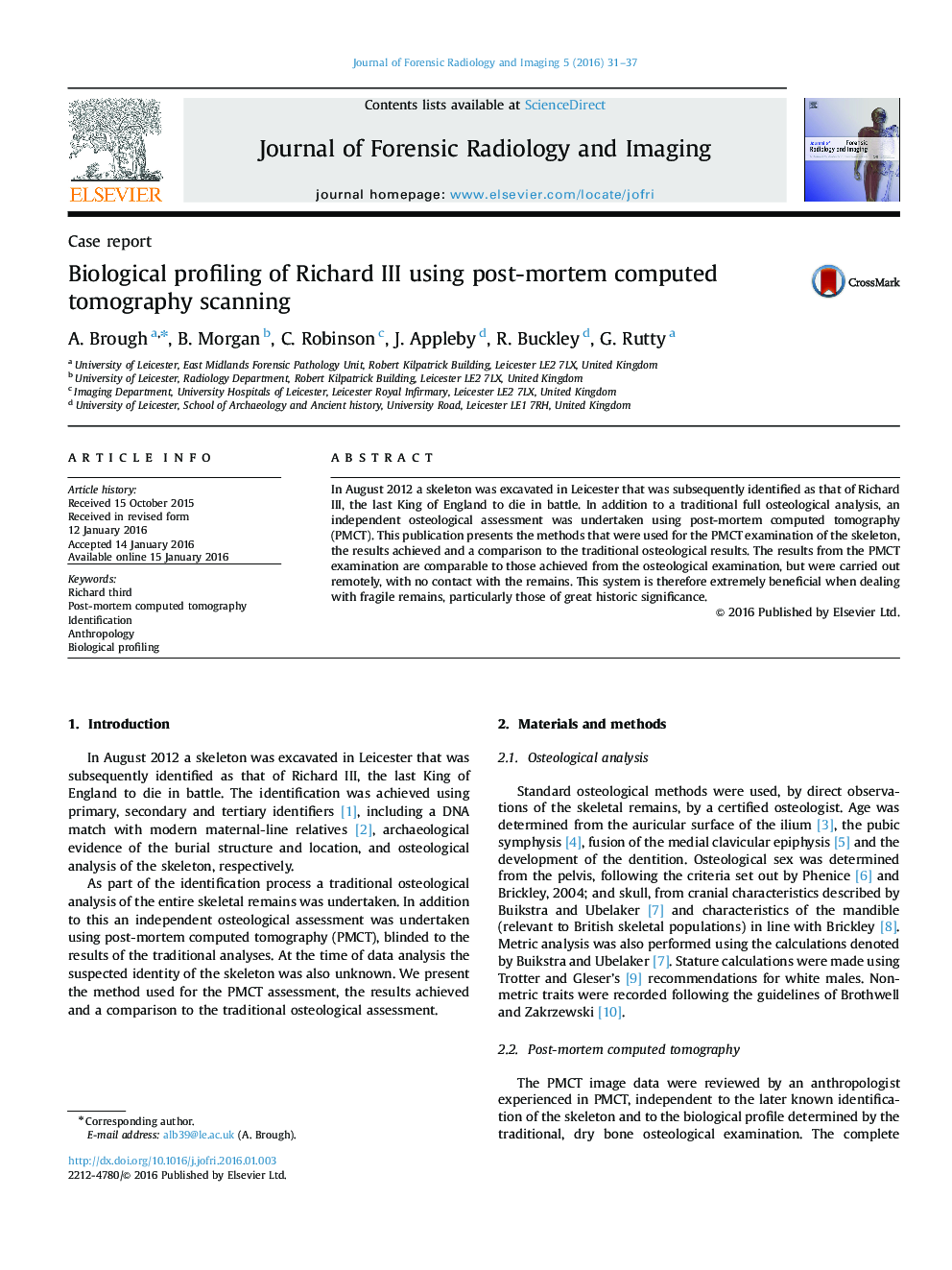| Article ID | Journal | Published Year | Pages | File Type |
|---|---|---|---|---|
| 103117 | Journal of Forensic Radiology and Imaging | 2016 | 7 Pages |
•PMCT was used to create a biological profile of Richard III.•The PMCT results were compared to the dry bone examination.•Using PMCT alone produced a comprehensive anthropological report of the remains.•Bones should be scanned before reconstruction.•Additional images highlighted trauma that was missed at the dry bone examination.
In August 2012 a skeleton was excavated in Leicester that was subsequently identified as that of Richard III, the last King of England to die in battle. In addition to a traditional full osteological analysis, an independent osteological assessment was undertaken using post-mortem computed tomography (PMCT). This publication presents the methods that were used for the PMCT examination of the skeleton, the results achieved and a comparison to the traditional osteological results. The results from the PMCT examination are comparable to those achieved from the osteological examination, but were carried out remotely, with no contact with the remains. This system is therefore extremely beneficial when dealing with fragile remains, particularly those of great historic significance.
